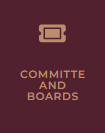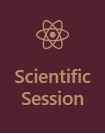Effects of Oral Exercise Towards Salivary Flow Rate In Elderly: An Interventional Study
DOI:
https://doi.org/10.18196/imunity.v1i1.29Keywords:
oral exercise, saliva, elderlyAbstract
Elderly population is increasing globally. The percentage of elderly people in Indonesia reached 9.60 percent. The Special Region of Yogyakarta (DIY) has the highest number of elderly people, which is 14.02. One of the oral health problems of elderly is dry mouth. Saliva is an important aspect needed to maintain oral health. Reduced saliva can cause various diseases. Simple and effective interventions are needed to improve salivary conditions in the elderly, namely oral health promotion by doing oral exercises which considered to maintain and improve oral function which is an important factor of quality of life. This research to determine the effect of a health promotion program with an intervention of oral exercise on salivary flow rate in the elderly at nine PKU Muhammadiyah and Aisyiyah clinics with audiovisual media accompanied by leaflet media. This study was conducted at PKU Muhammadiyah and Aisyiyah Pratama clinics in Yogyakarta. There are Berbah, Pakem, Firdaus, Cangkringan, Moyudan, Srandakan, Bambanglipuro, Wates and Sewugalur with 198 prolanis participants with total sampling. The research design is a quasi experimental nonequivalent control group design, with an intervention group and a control group, both groups are given before and after the intervention, , using Wilcoxon signed-rank test and Mann Whitney U test analysis. Oral exercise intervention with audiovisual media and leaflet can increase salivary flow rates in the elderly
References
BPS Provinsi DIY, 2017, Badan Pusat Statistik, Daerah Istimewa Yogyakarta.
Senjaya AA. Gigi Lansia. Jurnal Skala Husada. 2016 Apr;13(1):72-80
Lewis A, Kitson A, Harvey G. Improving oral health for older people in the home care setting: An exploratory implementation study. Australian Journal of Ageing. 2016.
Turner MD. Hyposalivation and Xerostomia Etiology, Complications, and Medical Management. Dent Clin N Am 60. 2016; 435–443. http://dx.doi.org/10.1016/j.cden.2015.11.003
Kim HJ, Lee JY, Lee ES, Jung HJ, Ahn HJ, Kim BI. Improvements in oral functions of elderly after simple oral exercise. Clinical Interventions in Aging. 2019; 14:915–924
Lysik D, Niemirowicz-Laskowska K, Bucki R, Tokajuk G, Mystkowska J. Artificial Saliva: Challenges and Future Perspectives for the Treatment of Xerostomia. International Journal of Molecular Science. 2019; 20: 3199
Raj BT, Sreelekha B, Manjula A. Effectiveness of oral exercise on oral function among the elderly. J Family Med Prim Care 2020;9:1896-903
Morisaki N. Effects of Oral Exercise on Oral Function among Japanese Dependent Elderly Individuals Living in Nursing Facilities. Int J Nurs Clin Pract. 2018; 5: 303. doi: https://doi.org/10.15344/2394-4978/2018/303
Ting CC, Ko EC, Chen CC, Chang WY, Tu HP, Chang CS. Effectiveness of an oral function intervention for older Taiwanese people. Gerodontology. 2019;00:1–8. https://doi.org/10.1111/ger.12412
Senjaya AA. Gigi Lansia. Jurnal Skala Husada. 2016 Apr;13(1):72-80
Sibi N, Kunnilathu A, Rukmini JN. Prevention and Promotion in Geriatric Oral Care Programs. Indian Dentist Research and Review. 2017 Feb.
Roblegg E, Coughran A, Sirjani D. Saliva: An all-rounder of our body. European Journal of Pharmaceutics and Biopharmaceutics. 2019;142:133–141. Doi: https://doi.org/10.1016/j.ejpb.2019.06.016
Haikal M, Adhani R, Wardani IK. Hubungan Laju Aliran Saliva Terhadap Kejadian Karies Gigi pada Penderita Hipertensi yang Mengkonsumsi Obat Antihipertensi (Tinjauan di RSUD DR. H. Mochammad Ansari Saleh Banjarmasin). Dentin (Jur. Ked. Gigi). 2020 Apr; IV(2): 39 – 42
Lubis LI. Nasution ID. Hubungan Laju Aliran Saliva dengan Performa Mastikasi Berdasarkan Jenis Kelamin pada Pemakai Gigi Tiruan Lengkap. Cakradonya Dent J. 2020; 12(1): 8-14
Narke, D., Harikiran, G.(2013) Effectiveness of oral health education programs: A systematic review. J Int Soc Prev Community Dent. Jul-Dec;3(2):103–115.
Soe K, Kim HN. Effects of oral health programmes on xerostomia in community‐dwelling elderly. (2020) A systematic review and metaanalysis. Int J Dent Hygiene; 8:52–61. Doi: https ://doi.org/10.1111/idh.12418
Nurlaili R, Susetyo, Gunawan D. Latihan Senam Mulut Untuk Meningkatkan Kemampuan Mengucap Konsonan Bilabial /M/ Pada Anak Tunarungu. JASSI_anakku. 2019 Jun: 20(1)
Cho, B., Hwang, J., Clovis, B., Lee,Y., Paik, I., Hwang,S. (2012) Enhancing the quality of life in elderly women through a programme to improve the condition of salivary hypofunction. Journal Gerodontology. 29: 972–980
Iwao, Y.,Shigeishi, H., Takahashi, S., Uchida, S., Kawano, S., & Sugiyama, M. (2019). Improvement of physical and oral function in community-dwelling older people after a 3 month long-term care prevention program including physical exercise, oral health instruction, and nutritional guidance. Clin Exp Dent Res.Jul;5:611-6619
Triswari, D., Pertiwi, A,D. (2017) Pengaruh Kebiasaan Menyikat Gigi Sebelum Tidur Malam Terhadap Skor Indeks Plak dan pH Saliva. Insisiva Dental Journal, Vol.6. No.2:1-8.
Sari, R.K., Widiajmoko, A. (2012) Pengaruh Komplikasi Neuropati Terhadap Xerostomia Pada Penderita Diabetes Mellitus Tipe II. Insisiva Denatl Journal, Vol.1.No.2: 20-26







